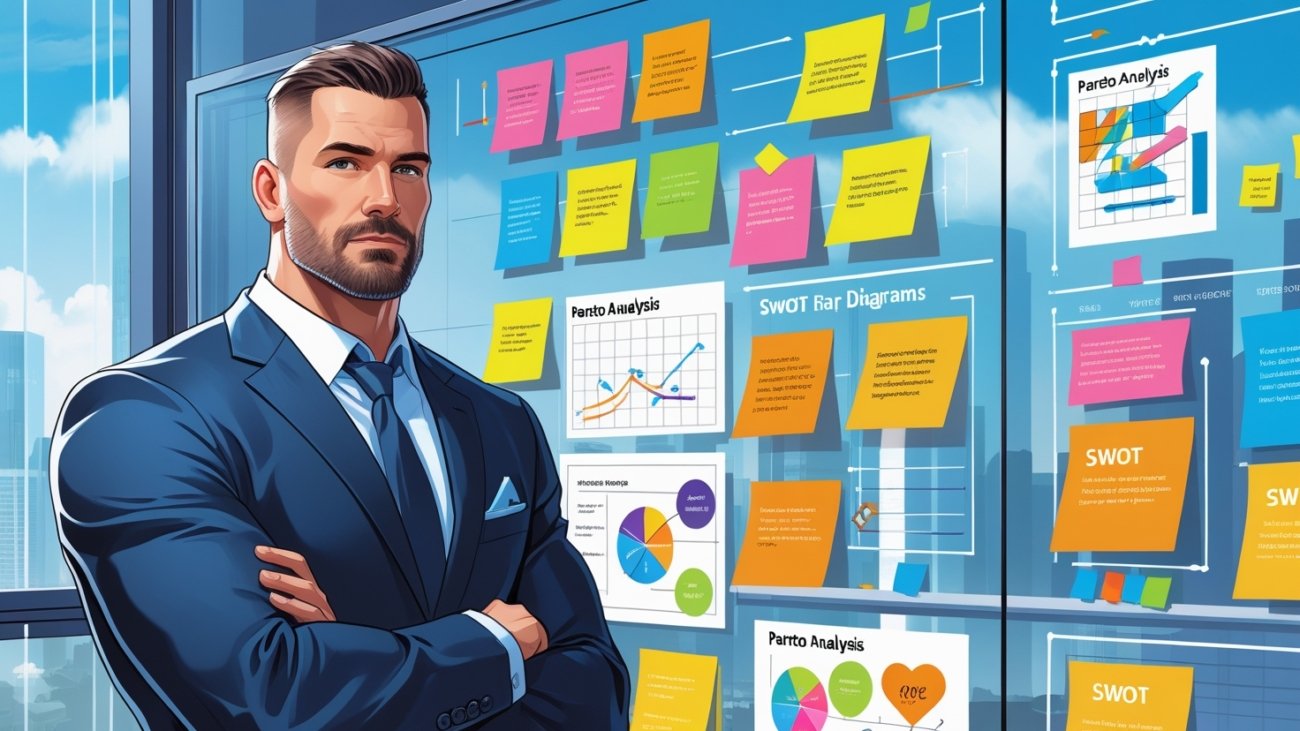
Effective decision-making is the backbone of exceptional leadership.
Top executives face complex, high-stakes choices daily, from strategic pivots to resource allocation.
To navigate these challenges, they rely on structured decision-making frameworks that balance data, intuition, and collaboration.
Why Decision-Making Frameworks Matter
Executives operate in environments with incomplete information, time constraints, and competing priorities.
Frameworks provide clarity, reduce bias, and ensure alignment with organizational goals.
A 2024 McKinsey study found that companies with structured decision-making processes are 30% more likely to achieve sustained growth.
By adopting proven frameworks, leaders can make decisions that are both strategic and adaptable.
1. The OODA Loop: Observe, Orient, Decide, Act
Originally developed by military strategist John Boyd, the OODA Loop is a dynamic framework for fast-paced environments.
- Observe: Gather real-time data from market trends, customer feedback, or internal metrics. For example, a tech CEO might analyze user engagement data to spot declining retention.
- Orient: Contextualize data based on your organization’s goals, competitors, and resources. Consider how external factors, like regulatory changes, impact your strategy.
- Decide: Choose a course of action based on your analysis. This might involve launching a new feature to address user churn.
- Act: Implement the decision and monitor outcomes, looping back to observation for continuous refinement.
Why It Works: The OODA Loop’s iterative nature suits volatile industries like tech or finance, where agility is critical.
For instance, Amazon’s Jeff Bezos used rapid decision cycles to test and scale new ventures like AWS.
How to Apply: Use dashboards for real-time data, hold brief stand-up meetings to orient teams, and pilot decisions on a small scale before full implementation.
2. The Eisenhower Matrix: Prioritizing Decisions
Named after President Dwight D. Eisenhower, this framework helps executives prioritize decisions based on urgency and importance.
- Urgent and Important: Address immediately (e.g., resolving a supply chain crisis).
- Important but Not Urgent: Schedule for strategic planning (e.g., developing a five-year growth plan).
- Urgent but Not Important: Delegate to capable team members (e.g., routine vendor negotiations).
- Neither Urgent nor Important: Eliminate or minimize (e.g., redundant meetings).
Why It Works: It prevents executives from being overwhelmed by low-value tasks, freeing time for high-impact decisions.
Leaders like Satya Nadella of Microsoft use prioritization to focus on transformative initiatives like cloud computing.
How to Apply: Create a weekly priority list, categorizing tasks into the four quadrants.
Use tools like Trello or Asana to delegate and track progress.
3. The WRAP Framework: Avoiding Decision Traps
Developed by Chip and Dan Heath, the WRAP framework (Widen options, Reality-test assumptions, Attain distance, Prepare to be wrong) counters cognitive biases.
- Widen Options: Avoid narrow framing by exploring multiple solutions. For example, instead of choosing between two vendors, consider in-house development.
- Reality-Test Assumptions: Challenge your assumptions with data or external perspectives. A retail executive might test a new store layout with a pilot before a chain-wide rollout.
- Attain Distance: Step back to consider long-term impacts, perhaps by sleeping on a decision or consulting a mentor.
- Prepare to Be Wrong: Plan for contingencies, like setting aside a budget for unexpected costs.
Why It Works: WRAP mitigates biases like overconfidence or groupthink, ensuring robust decisions. Leaders like Indra Nooyi of PepsiCo used broad option exploration to drive sustainable product innovation.
How to Apply: During strategy sessions, brainstorm at least three options per decision, validate assumptions with data, and create “what-if” scenarios.
4. The Cynefin Framework: Navigating Complexity
Developed by Dave Snowden, the Cynefin framework helps executives categorize problems and choose appropriate responses based on complexity.
- Clear: Simple problems with known solutions (e.g., routine IT upgrades). Use best practices and delegate.
- Complicated: Problems requiring expertise (e.g., optimizing supply chains). Consult specialists and analyze data.
- Complex: Uncertain scenarios (e.g., entering a new market). Experiment with small-scale tests and adapt based on feedback.
- Chaotic: Crisis situations (e.g., a PR scandal). Act decisively to stabilize, then analyze.
- Disordered: Unclear problems requiring further clarity to categorize.
Why It Works: Cynefin helps executives match their approach to the problem’s nature, avoiding one-size-fits-all solutions.
Leaders like Elon Musk apply experimental approaches in complex scenarios, such as SpaceX’s iterative rocket designs.
How to Apply: Map decisions onto the Cynefin domains during planning sessions.
For complex issues, run pilot projects and review outcomes before scaling.
Practical Tips for Implementation
- Combine Frameworks: Use the OODA Loop for rapid decisions in crises and the Eisenhower Matrix for long-term prioritization.
- Leverage Technology: Tools like Tableau for data analysis or Miro for collaborative brainstorming enhance framework execution.
- Involve Teams: Engage diverse perspectives to reduce bias and improve buy-in. For example, include frontline staff in WRAP’s reality-testing phase.
- Reflect and Refine: After major decisions, conduct a post-mortem to evaluate outcomes and refine your approach.
Overcoming Common Challenges
Executives often face obstacles like information overload, time pressure, or team resistance. To address these:
- Filter Data: Focus on key performance indicators (KPIs) relevant to the decision, avoiding analysis paralysis.
- Set Deadlines: Time-box decisions to maintain momentum, especially in the OODA Loop’s “Decide” phase.
- Communicate Rationale: Share how frameworks guide your choices to build team trust and alignment.
Real-World Examples
Consider Angela Ahrendts, former Apple retail chief, who used the Eisenhower Matrix to prioritize store redesigns while delegating operational tasks.
Similarly, Reed Hastings of Netflix applies the Cynefin framework, experimenting in complex areas like content creation while standardizing clear processes for platform maintenance.
Conclusion
Decision-making frameworks empower executives to navigate complexity with confidence.
The OODA Loop drives agility, the Eisenhower Matrix ensures focus, WRAP counters biases, and Cynefin tailors responses to context.
By adopting these tools, leaders can make informed, strategic choices that inspire teams and drive success.
Start by applying one framework to your next major decision, and refine your approach through practice and reflection.
With time, these frameworks become second nature, elevating your leadership to new heights.

